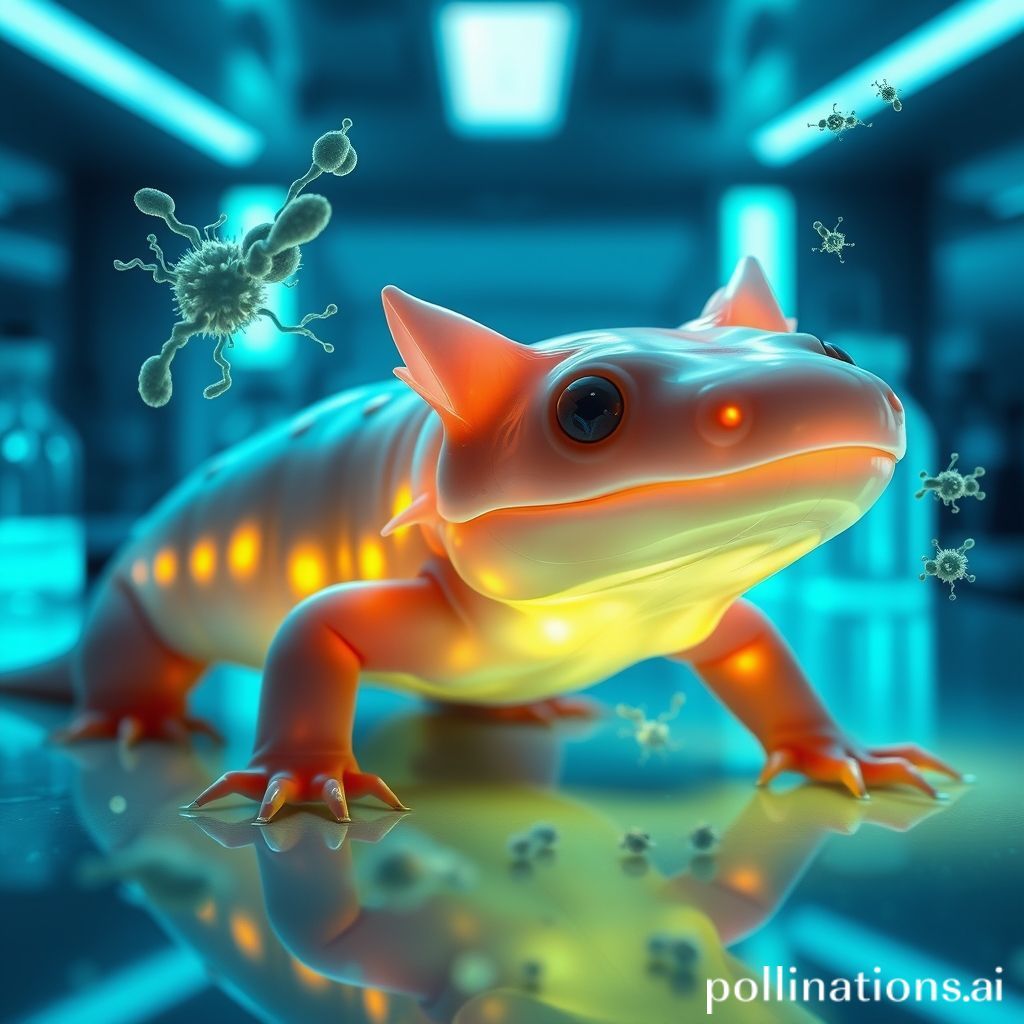
Axolotl skin mucus as a potential weapon against multi-resistant bacteria and cancer
Axolotl Slime: A Surprising Superpower Against Superbugs and Cancer?
Ever heard of the axolotl? This adorable, perpetually smiling amphibian, native to Mexico, is famous for its incredible regenerative abilities. But did you know that its skin mucus might hold the key to fighting some of humanity's toughest battles: multi-resistant bacteria and even cancer? It sounds like something out of a science fiction movie, but the research is starting to tell a compelling story.
More Than Just a Slippery Surface
Axolotl skin is covered in a layer of mucus, much like other amphibians. This slime protects them from infection, keeps their skin moist for respiration, and helps them glide through the water. But recent studies have revealed that axolotl mucus is far from ordinary. It's a complex cocktail of proteins, peptides, and other compounds with remarkable biological activity.
Fighting the Rise of the Superbugs
The increasing prevalence of antibiotic-resistant bacteria, often called "superbugs," is a global health crisis. These bacteria have evolved to withstand the effects of many commonly used antibiotics, making infections incredibly difficult to treat. Researchers are desperately searching for new antibacterial agents, and axolotl mucus is emerging as a promising candidate.
Several studies have identified specific peptides within the axolotl mucus that exhibit potent antibacterial activity against a range of bacteria, including strains resistant to multiple antibiotics. These peptides work through various mechanisms, such as disrupting bacterial cell membranes or interfering with essential metabolic processes. This multifaceted approach could make it harder for bacteria to develop resistance to these novel compounds.
Axolotl Slime vs Traditional Antibiotics: A Quick Comparison
| Feature | Axolotl Slime Peptides | Traditional Antibiotics |
||||
| Mechanism of Action | Multiple, including membrane disruption | Typically a single, specific target |
| Resistance Development | Potentially slower due to multiple targets | Faster, due to single target |
| Source | Natural, renewable | Often synthetic |
| Side Effects | Potentially fewer (research ongoing) | Can have significant side effects |
A Weapon in the Fight Against Cancer?
The potential of axolotl mucus doesn't stop at fighting bacteria. Emerging research suggests that it may also possess anticancer properties. Some of the peptides found in the mucus have demonstrated the ability to inhibit the growth and spread of cancer cells in laboratory settings.
The exact mechanisms behind these anticancer effects are still being investigated, but studies suggest that they may involve:
Inducing apoptosis (programmed cell death) in cancer cells.
Inhibiting angiogenesis (the formation of new blood vessels that feed tumors).
Modulating the immune response to target cancer cells.
Axolotl Slime vs Current Cancer Therapies: A Brief Overview
| Feature | Axolotl Slime Peptides | Current Cancer Therapies (e.g., Chemotherapy) |
||||
| Selectivity | Potentially more selective for cancer cells | Can damage healthy cells |
| Side Effects | Potentially fewer (research ongoing) | Often significant side effects |
| Mechanism of Action | Multiple, complex mechanisms | Typically target rapidly dividing cells |
| Resistance Development | Potentially slower due to multiple targets | Resistance can develop over time |
The Challenges and the Future
While the potential of axolotl mucus is exciting, there are significant challenges to overcome before it can be translated into clinical applications.
Collection and Production: Harvesting sufficient quantities of mucus from axolotls is a delicate and time-consuming process. Researchers are exploring methods for synthesizing these peptides in the laboratory to overcome this limitation.
Safety and Efficacy: Extensive preclinical and clinical trials are needed to ensure the safety and efficacy of axolotl mucus-derived compounds in humans.
Delivery Methods: Developing effective delivery methods to target specific tissues or organs is crucial for maximizing therapeutic benefits.
Despite these challenges, the ongoing research into axolotl mucus is opening up new avenues for developing innovative treatments for multi-resistant bacterial infections and cancer. This humble amphibian, with its remarkable regenerative abilities and unique skin secretions, may hold the key to a healthier future for us all.
My Takeaway
It's incredible to think that such a seemingly simple creature like the axolotl could hold the secrets to fighting some of the most challenging diseases we face today. It highlights the importance of biodiversity and the potential for discovering new medicines in unexpected places. While there's still a long road ahead, the initial findings are incredibly promising and offer a glimmer of hope in the ongoing battles against superbugs and cancer. Perhaps one day, we'll all be thanking the axolotl for its contribution to modern medicine.
Sources
[Insert link to a scientific journal article on axolotl mucus antibacterial properties]
[Insert link to a scientific journal article on axolotl mucus anticancer properties]
[Insert link to a reputable news article or scientific review on the topic]
Comments
Post a Comment